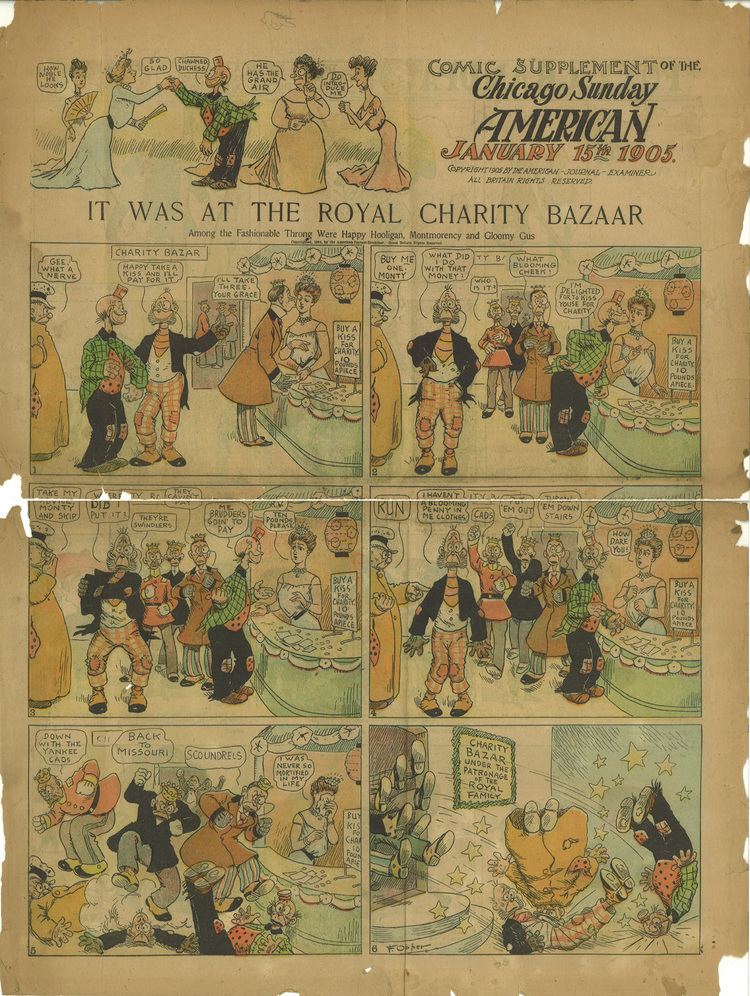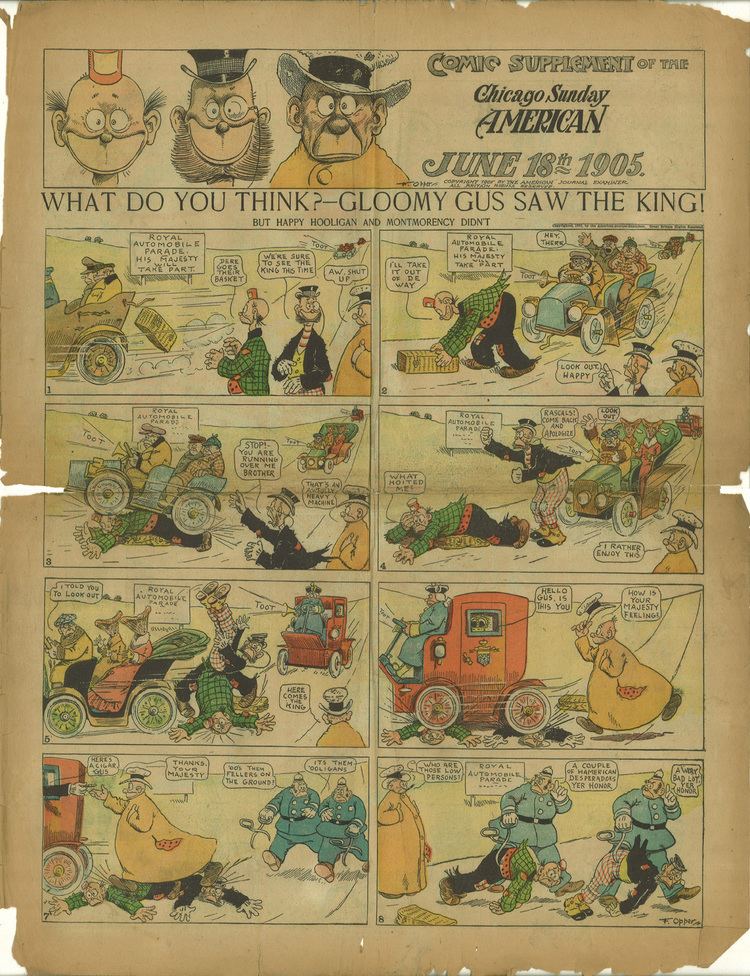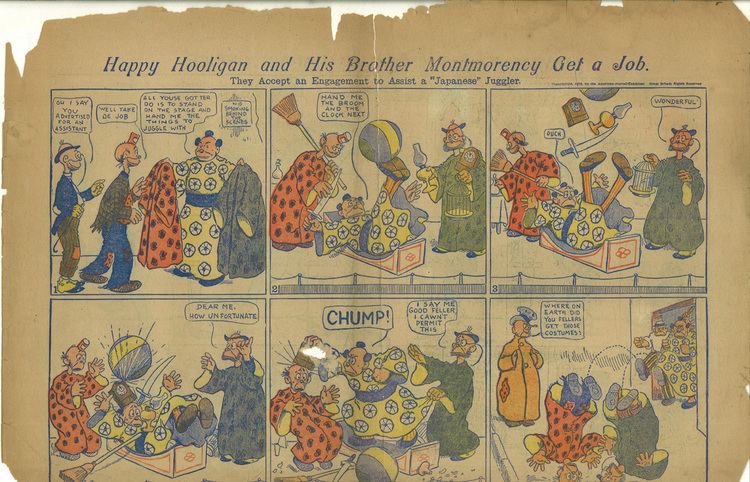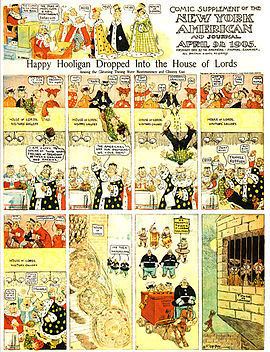Current status / schedule Ended Genre(s) Humor End date August 14, 1932 | Launch date March 11, 1900 | |
 | ||
Similar The Katzenjammer Kids, Little Jimmy, Bringing Up Father, Sam and Silo, And Her Name Was Maud | ||
Happy Hooligan was a popular and influential early American comic strip, the first major strip by the already celebrated cartoonist Frederick Burr Opper. It debuted with a Sunday strip on March 11, 1900 in the William Randolph Hearst newspapers, and was one of the first popular comics with King Features Syndicate.
Contents

Characters and story

The strip told the adventures of a well-meaning hobo who encountered a lot of misfortune and bad luck, partly because of his appearance and low position in society, but who did not lose his smile over it. He was contrasted by his two brothers, the sour Gloomy Gus and the snobbish Montmorency, both just as poor as Happy. Montmorency wore a top hat and monocle but was otherwise as ragged as his siblings.

Like the other major comics by Opper, And Her Name Was Maud and Alphonse and Gaston, Happy Hooligan initially did not run on a regular schedule, skipping Sundays from time to time, while some other weeks two pages appeared at once; the character also played a role in some of Opper's daily strips. After a few years, though, Happy Hooligan became a regular feature with both daily strips and Sunday pages.
Books

Opper was one of the most popular comic creators of his time. Happy Hooligan and his other popular strips were collected in book form and developed into merchandise products. The comic got translated as well and was, together with the Katzenjammer Kids and And Her Name Was Maud, one of the first North American comics to be published in Argentina, as Cocoliche. The comic was also probably the very first American comic strip adapted for films, when J. Stuart Blackton directed six live-action shorts (1900–03). Some 15 years later, it was adapted for more than 50 animated cartoons.

Beginning in 1904, Opper drew And Her Name Was Maud, about the kicking mule Maud, into comic strips and books, but on May 23, 1926, he positioned And Her Name Was Maud as the topper to his Happy Hooligan, and it ran along with Happy Hooligan until both strips came to a conclusion on October 14, 1932.

As Opper did not use an assistant, the series ended in 1932 when Opper abandoned it due to failing eyesight. While lacking lasting popularity, the series remained influential and inspired other cartoonists such as Rube Goldberg and Jules Feiffer(who compared the title character to President Gerald Ford) and was also arguably a major inspiration for Charlie Chaplin's The Tramp character. It was called "Opper's greatest comic character" by comics artist Coulton Waugh.Happy Hooligan is also cited as the first comic to use speech balloons on a regular basis as an integral part of the comic (The Yellow Kid used speech balloons as early as 1896 but did not use them as the main means of communication).
Sam's Strip

In the early 1960s, Happy Hooligan was a semi-regular character in Sam's Strip; dozens of other comic-strip characters had appeared as "guests" in the strip, but Hooligan appeared so often that he was eventually treated as a regular member of the cast.
